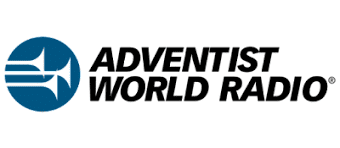Tokyo Bay is a huge and wide bay that is landlocked and protected by several islands, large and small. Surrounding the bay are many well known cities such as Chiba, Kawasaki and Yokohama, and of course, Tokyo itself.
Originally, Tokyo was known as Edo, the name of a ruling family in the Middle Ages. The name of the city was changed in 1868 to Tokyo, a name that means “Eastern Capital.”
At the end of events associated with the Pacific War, His Majesty Hirohito, the Showa Emperor of Japan, announced on radio on August 15 1945 that the war was over. The Peace Ceremony was signed on board the navy vessel “Missouri” nearly three weeks later, on September 2. The role that radio played in these events forms an important and interesting chapter in international radio history.
At the time of the signing ceremony on the aircraft carrier “Missouri,” there were 260 Allied navy vessels at anchor in Tokyo Bay. The “Missouri” itself lay at anchor eighteen miles out in the bay and six miles off the coast of Yokohama. An armada of 1900 planes, Air Force and Navy, flew overhead.
The USS “Missouri” was launched in January 1944, the fourth navy vessel to bear this title. It was noted on the air in that era by shortwave listeners in the United States, New Zealand and Australia with the callsign, NCBL.
Another navy vessel, the USS “Iowa“, also played a major role in the relay of radio signals at the time of the historic events in Tokyo Bay. This ship, the “Iowa,” was launched in August 1942, and it was often noted on air under the callsign KU1M calling KU5Q on the island of Guam.
At the time of the signing ceremony, many radio circuits were activated to ensure reliable worldwide coverage. The originating point was the main ship transmitters, NCBL, on the “Missouri.” Nearby was the “Iowa” which acted as the network control for these broadcasts with its shortwave transmitters under the callsign KU1M.
The four shortwave transmitters of Radio Tokyo at Nazaki in Japan carried a relay of the broadcast for long distance coverage, which was picked up in Guam, the Philippines and Hawaii for onward relay to the receiving stations in California and elsewhere. And from there, of course, the relay became a worldwide radio broadcast phenomenon.
It was on September 2, 1945, at 9:02 am local time that General Douglas MacArthur stepped before the microphone that was set up on the landing deck of the “Missouri” for this historic worldwide broadcast. His wife Jean was still in the Philippines at the time, living in the German embassy on the edge of Manila. She heard her husbandís radio broadcast on a shortwave radio.
There is only one known QSL from these ships in this era. A QSL letter was received by Ray Simpson, the shortwave columnist for the Australian magazine, Radio & Hobbies. This letter, verifying the reception of KU1M on the “Iowa” in March 1947, was received from the radio section at navy headquarters in California. At the time, the “Iowa” was on Navy maneuvers off the coast of California, and it was noted on 9670 kHz.
From: Wavescan 452, August 31, 2003
 “Wavescan” is a weekly program for long distance radio hobbyists produced by Dr. Adrian M. Peterson, Coordinator of International Relations for Adventist World Radio. AWR carries the program over many of its stations (including shortwave).
“Wavescan” is a weekly program for long distance radio hobbyists produced by Dr. Adrian M. Peterson, Coordinator of International Relations for Adventist World Radio. AWR carries the program over many of its stations (including shortwave). 